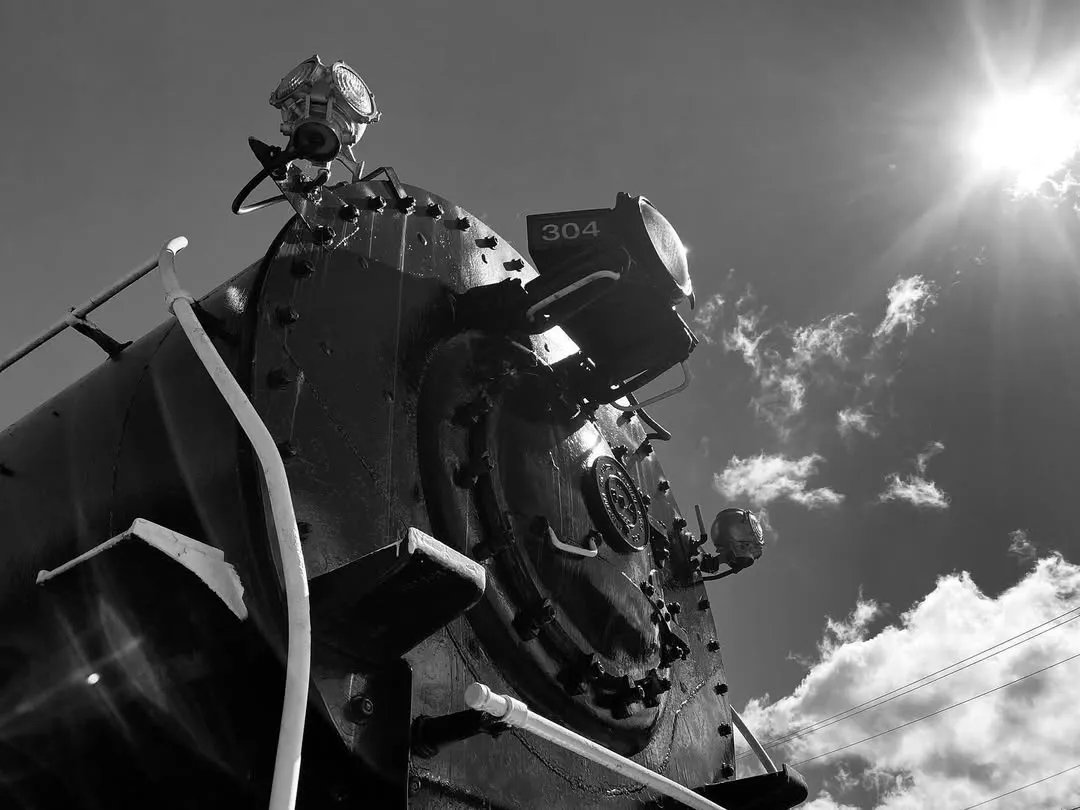
Greenville, PA 16125
First weekend in May through the first weekend in June; also Memorial Day
Daily except Monday - Noon to 5 p.m.
Beginning the second week in June, July, and August, through Labor Day
Saturday, Sunday - Noon to 5 p.m.
During September and October
The Museum's motto stands as a reminder to us all:
"...that the old will remember, and the young shall know."
Engine 604
ENGINE 604 - the last of its kind - was the largest switch engine ever built...
Nine mammoth engines were built for the Union Railroad in 1936 at the Baldwin Locomotive Works outside of Philadelphia. When the locomotives were retired in 1960, only one, the Greenville engine, was saved. The other eight were scrapped.
Initially used in the steel industry (Union and the Bessemer and Lake Erie Railroads were owned by U.S. Steel), these historic engines saw heavy use during World War II. But by 1949, the engines had been replaced by diesels. At this point, the six massive engines found a new home on another U.S. Steel line—the Duluth, Missabe, and Iron Range Railroad.The Greenville engine was called the 304 during its years of service for the Union line. While working in Minnesota's iron ore industry, it was called Engine 604. Both numbers and the lines under which it saw service appear on the beautifully restored locomotive, which is in its permanent home in the Greenville Area Railroad Park. Engine 604 made its final trip to the Park in March 1985.
In addition to being the only one of its kind remaining in the world and the largest switch engine ever built, Engine 604 is unique because of some of its technical features. Most engines had two or four small pilot wheels at the front to guide them on switches.
Engine 604 features a unique 0-10-2 wheel arrangement, referring to its 10 drive wheels and two smaller wheels under the firebox to support the cab. (Union's turntables were not big enough for the usual 2 to 4 pilot wheels.) Each of the drive wheels has counterweights to balance the sidearms. The engine is so powerful that, absent the counterweights, the vibration would shake the locomotive apart. The engine could carry 14 tons of coal and 12,000 gallons of water: about enough for a day's work.A coal tender, hopper car, and caboose are displayed with the engine today. The hopper is of special interest because it was built in 1952 at the Greenville Steel Car Company (now Trinity Industries), which is still located slightly south of the Museum site along the railroad tracks. Reconstructions of the Stationmaster's Quarters and Dispatcher's Office house exhibits relating to the Railroad Era in Greenville.
Empire Car
Like Engine 604, the Empire Car is a "one-of-a-kind". One of about 500 Greenville Metal Products Company-built, the Empire Car first rolled off the assembly line in 1913. It was one of two automobiles - the other was called the Fay - built by the Steel Car in 1913 and 1914. The Empire was a moderate-sized, 5-passenger touring car. Greenville Metal built the machine under contract for sale by the Empire Automobile Company in Indianapolis, Indiana. Despite the enthusiastic advertising, by 1914, there was no longer a demand for Empire cars. Greenville Metal Products company changed its name to Greenville Steel Car and began to rebuild steel freight train cars for the Bessemer and Lake Erie Railroad. Today, the company is known as Trinity Industries and is one of the world's largest contract rail car builders.
Meanwhile, the Empire car sank into obscurity. In the Summer of 1966, Greenville Steel Car reacquired this 1913 Empire Model 31 from the owner of Trenor Motor Company in Springfield, Ohio. Loecy's Coach and Motor Works in Chardon, Ohio, was given a contract to restore the automobile to its original condition. It is believed that only several 1913 Empire cars are still in existence and have been authentically restored to their original condition. The car was driven in Greenville's Sesquicentennial Parade, August 21, 1988. It survived the 2.5-mile trip in fine condition. After more than 50 years, Greenville's Empire is back home again!Parachute
Another pioneering chapter in Greenville and U. S. History... The invention of the parachute
Stefan Banic was born in Slovakia in the old Austro-Hungarian empire in 1870 (the city of Smolenice in Trnava). He emigrated to America in 1907 at the age of 37. Adopting Greenville as his home, he worked in the bituminous coal mines in Mercer County.
In his spare time, Stefan Banic worked hard on a new invention: the first parachute. He obtained a patent for this new device on August 25, 1914. A patriotic man, Banic donated the rights to this invention to the U. S. Government for a token fee: an honorary membership in the Army Air Corps. His invention was to become an important one in the history of World War II, and all modern aviation.
Banic himself returned to Czechoslovakia at the end of World War I and died there in 1941. A special memorial tablet to him was unveiled at the Bratislava Airport in 1970. Slovakian Americans honor Banic for his contributions to American history. It is fitting that the Friends of Engine 604 have chosen to pay tribute to this Greenville pioneer.


